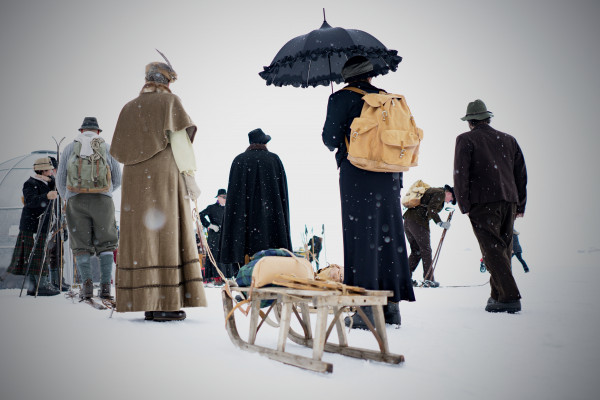More than any other part of a story, the beginning has to grab the audience’ or reader’s attention.
In the beginning, before audience or readers are emotionally involved and concerned about the fates of the characters, the danger of them turning away from the story is greatest.
Now, there’s more to a beginning than the kick-off event. While being an attention grabber, the entire first section of a story also has to establish the following:
- Who the story is about
- What the story is about
- Where the story takes place
That sounds self-evident, but all the elements needed to answer those three points amount to an awful lot of information. And at this stage, the audience or readers are not yet patient or forgiving, because they are not yet emotionally hooked.
In this post we will:
- look at the who/what/where
- determine the three key events that the first section of a story must include
- provide a checklist of all the elements the first part of a story requires
Who/what/where
(more…)

How to describe a full plot event.
We’ll talk here about describing events, since the usual term scene is more general and has different meanings for different media. Furthermore, a scene may conceivably contain more or less than one entire event.
An event in a story requires three elements: characters, function, and (perhaps most importantly) a difference between expectation and result.
In describing each plot event, it is useful to consider the six wh- questions as a guide: Who does what to whom, where, when and why? With this approach, each plot event gains its own logline, which is a good exercise since it forces you as an author to figure out just what dramatic function each plot event has in the context of the overall narrative.
Viewing the overall narrative, certain plot events can function as beats. More on this structural function of plot events here.
Characters
Characters causing events make story. As(more…)
How aware are you of your creative process during writing?
Do you really consciously control what comes out of your fingers onto the page?
Even when writing happens “naturally”, while the words are pouring forth, the author is probably already performing a first level check that precedes the more detached and critical control of rewriting. If you want to make yourself more conscious of this process, consider putting an imaginary parrot on your shoulder every time you sit down to write.
 A parrot?
A parrot?
Well, the creature of your choice. At Beemgee, it’s a parrot.
The parrot reads what you write as you write it and squawks a running commentary into your ear. It might commend a good sentence or it might censure. It might suggest alternative words or phrases. It may like or hate a paragraph.
The parrot has three main hobbyhorses: relevance, surprise, and recognition.
Relevance – (more…)

Stories are about people. Even the ones about robots, or rabbits, or whatever.
If you’re thinking about composing a story, you will probably have some characters in mind that will be performing the action of the story. In stories, action and actors (in the sense of someone who does something) are pretty much the same thing looked at from two differing perspectives, as we have noted in our post Plot vs. Character.
The most obvious difference between characters in stories and people in real life is that story characters tend to be driven. Narratives tend to be more compelling when the characters they describe are highly motivated. Rarely in life are our wants, goals, and perceived needs as clear and powerful as for characters in stories. Our real lives tend to drift rather than head in a specific direction; it is often in retrospect that we ascribe direction when we try to understand our lives by putting them into narratives. Historical personages who seem to demonstrate drive and direction (and have perhaps become historical personages because they had these qualities) make for more interesting biographies than people whose motivations were less strong.
Another aspect that sets characters in fiction apart from people in life is that characters tend to fulfil narrative functions in their story. People, on the other hand, live their lives by acting naturally according to the dictates of their personality. A story is a more or less enclosed unity, while an individual’s life is part of a greater whole. Only in retrospect do we sometimes overlay a narrative onto the biography of an individual – because we tend to feel happier when we perceive structure or direction in the lives of others or indeed our own. We can extract more meaning out of a life that can be told with structure and direction. In fact, there is no way of recounting a person’s biography without making choices concerning structure. If we’re honest, even the choice of which events to relate and how to relate them injects a fair amount of fiction into the story of a life, especially when that life is our own as we tell it to others or ourselves.
Many stories focus primarily on one protagonist. In fiction at least, the protagonist is often wiser at the end of the story than at the beginning. The(more…)
Some people say they don’t like plot.
For some people, plot is like a dirty word. They prefer their stories to concentrate on character. Or premise. Or language. It is action movies or thrillers by Michael Crichton or Robert Ludlum that have plots.
At Beemgee, we believe that the four pillars that hold a story up are plot, character, meaning, and language – with conflict as girders. Every story, no matter how “good” or “bad”, exhibits all four of these pillars. No story can really go without any one of them. Not to mentions aspects like story world, backstory, or exposition.
We have not found a single work of fiction in any medium or genre that does not have a plot. Ulysses has a plot. The Sound And The Fury has a plot. Even some of the most famous attempts in literary history to shun plot, such as I Am a Cat by Soseki Natsume or Tristram Shandy by Laurence Sterne, did not manage to avoid describing events and characters. Their language might be beautiful and to an extent their premise is the attempt to shun plot. But nonetheless, the stories describe events, things happen in an order, the authors made conscious decisions about the sequence in which to relate the occurrences. To what degree the narrative is structured in these books may be topic for debate, but if we consider plot to be simply a sequence of events, then no story can go entirely without it and still be considered a story.
There is an intimate relationship(more…)


